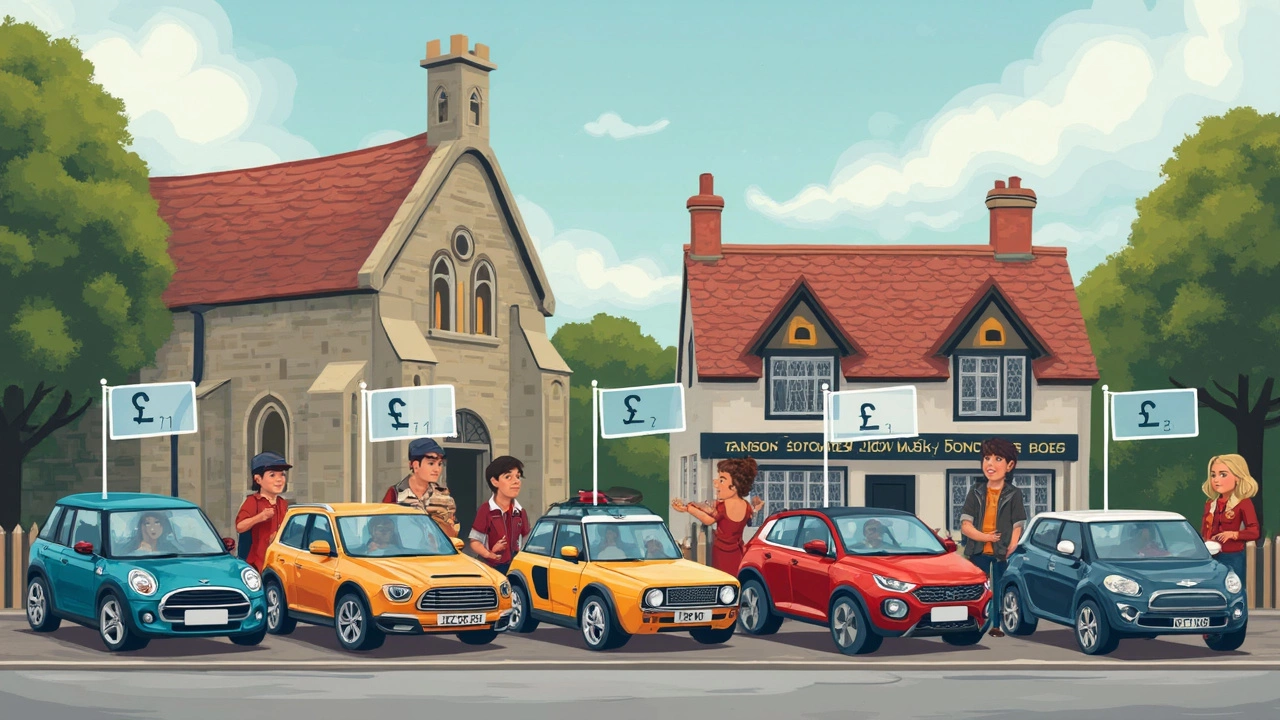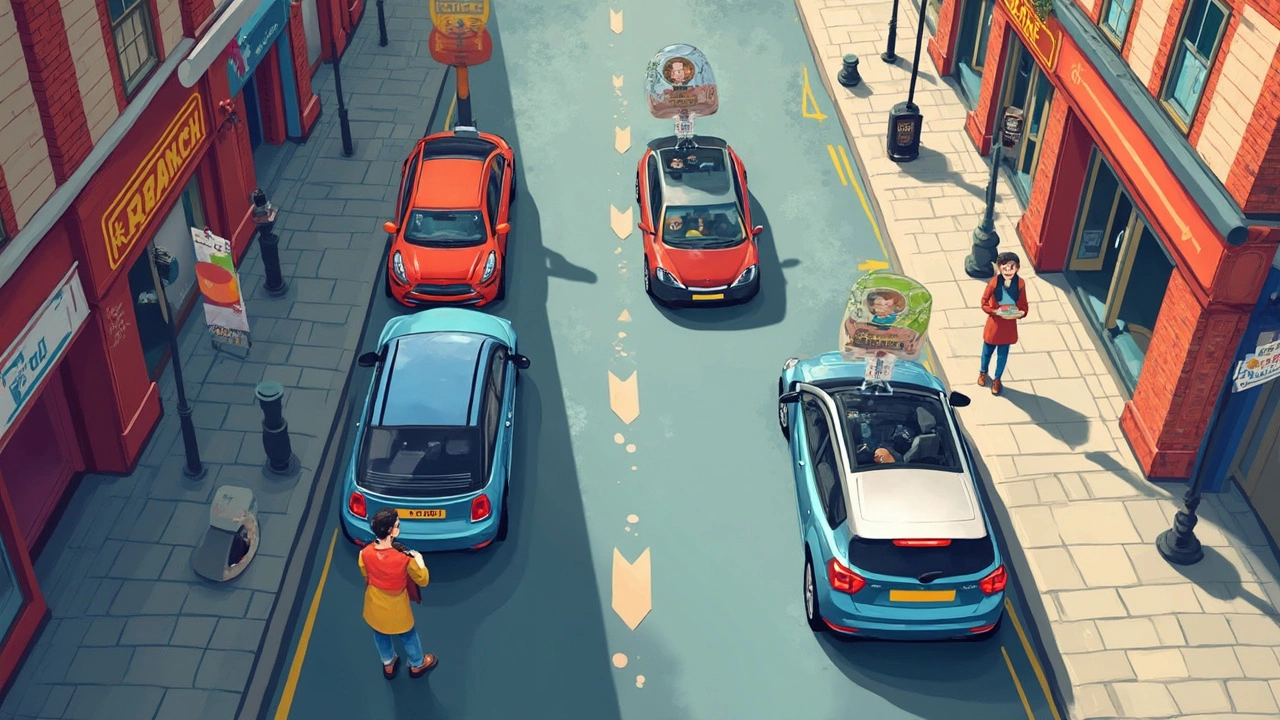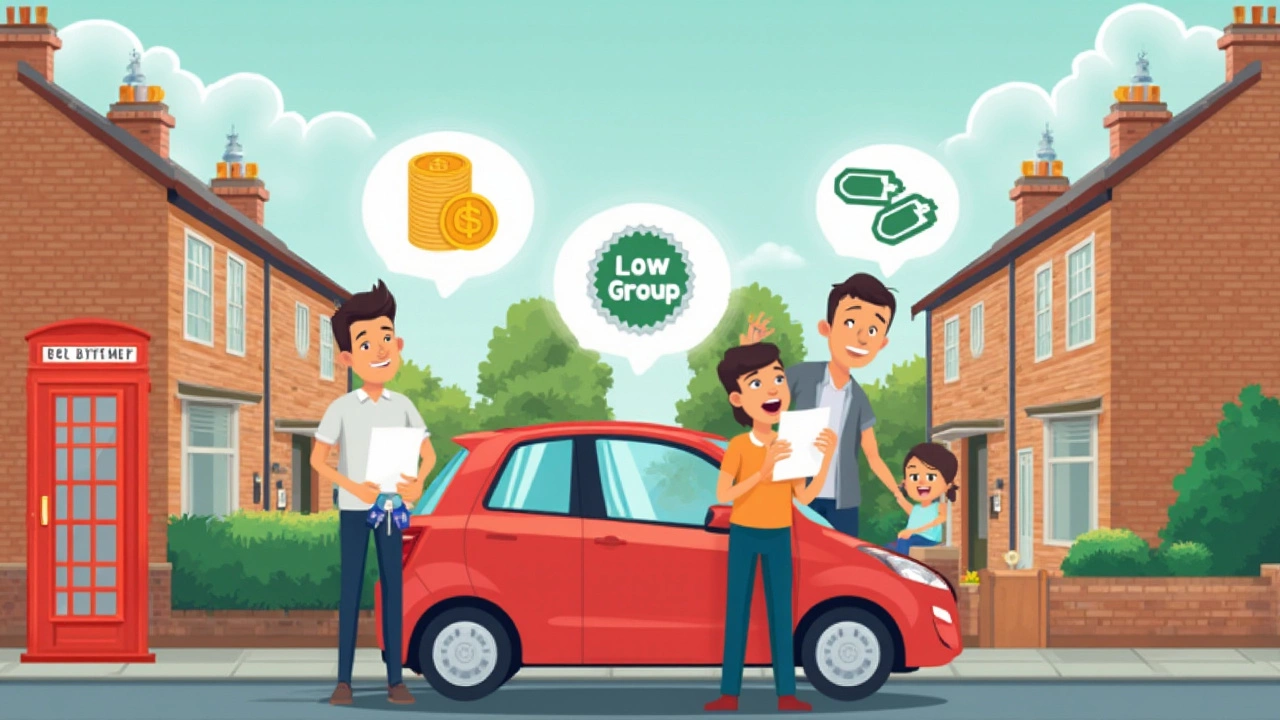Everyone wants to spend less on car insurance, right? Here’s the game changer—your car’s insurance group. Most folks don’t even realize how much this matters for their premiums. Car insurance groups are basically ranking systems (numbered 1 to 50 in the UK), set by experts who analyze how risky and expensive a specific car could be if it’s in a crash or gets stolen.
The lowest car insurance group—the group 1 club—is where you’ll find the cheapest cars to insure. If you’re stumped about why your friend pays way less than you for the same cover, their car probably sits in a lower group. Insurance companies love these vehicles because repair bills are small and engine sizes stay modest, meaning fewer wild claims.
Don’t brush this off as only for new drivers or people with ancient runarounds. Even families, students, and everyday drivers are on the hunt for low group cars because the savings can run into hundreds a year. It’s not just about picking a boring, basic model. Some newer, slick-looking cars sneak into group 1 thanks to their modern safety tech and cheap spare parts.
- How Car Insurance Groups Work
- What Is the Lowest Car Insurance Group?
- Cars in the Lowest Insurance Group
- Benefits and Drawbacks of Low Group Cars
- Tips to Get Cheaper Car Insurance
How Car Insurance Groups Work
Ever wondered why two cars that look pretty similar can have wildly different insurance prices? The secret is car insurance groups. In the UK, cars get sorted into groups numbered 1 through 50. The lower the number, the less you usually pay. It’s way more scientific than you might think—there’s an actual panel, the Group Rating Panel, that crunches the numbers each year. They’re not messing about either; they check things like repair costs, parts prices, safety ratings, performance, how easy the car is to steal, and even bumper strength.
If a car is cheap to fix and doesn’t get stolen much, it gets put in a lower group. But if spare parts are rare and expensive—think fancy imported engines or specialist tech—it shoots up the list. Insurers use this group number along with your age, where you live, and your driving history to set your premium.
The Association of British Insurers states: “Insurance group ratings play a vital role in the calculation of car insurance premiums. They ensure premium pricing reflects the risk associated with a particular make and model.”
Here’s a quick look at what the panel checks out:
- Cost of repairs and parts (most claims come from accident damage)
- Price of the car brand new
- Engine size and performance
- How secure the car is (locks, alarms, immobilisers)
- Safety tech and crash protection
- Historical claim statistics
To nail it down, check out this simple table:
| Group Number | Typical Car Examples | Insurance Cost (Est. Annual Premium) |
|---|---|---|
| 1 | Vauxhall Corsa, Ford Fiesta 1.0 | £750–£950 |
| 25 | VW Golf GTI | £1,200–£1,500 |
| 50 | BMW M5, Tesla Model S | £2,000+ |
Bottom line: your choice can have a serious impact on your wallet. Picking a car from the lowest car insurance group is the most direct way to lower your annual premiums, especially if you’re watching every pound.
What Is the Lowest Car Insurance Group?
If you’ve ever wondered why two similar-looking cars can have totally different insurance prices, it usually comes down to those insurance groups. Here’s how it works: in the UK, cars get sorted into groups numbered from 1 up to 50. Group 1 is the absolute lowest, and it’s where you’ll find the cheapest cars to insure, hands down. When you see something listed as a Group 1 car, it means insurers see it as little risk – cheap to repair, safe as houses, easy on fuel, and not super flashy or fast.
So why do insurance companies put so much weight on these groups? They’re set by the Group Rating Panel, which includes car insurance experts and members of the Association of British Insurers. When they look at a car, they check loads of details like:
- How much it costs to fix after a bump
- How fast it goes (yep, slow and steady often wins the cheap insurance race)
- The price of replacement parts
- How it performs in safety tests
- How popular it is with thieves
Group 1 cars are usually small hatchbacks with low-powered engines, like the Volkswagen Up, Hyundai i10, and older versions of the Ford Ka. A lot of group 1 models are aimed at new drivers, but don’t be fooled – they’re a smart pick for anyone trying to keep bills low. It’s not just size, though. Plenty of insurance group crossovers happen because some cars, thanks to new tech and great safety gear, slip into lowest car insurance group rankings even if they look modern.
The bottom line? If you want the lowest car insurance, pick a car in group 1. You can always check a vehicle’s group for free online, or ask your dealer before signing any paperwork. It’s one of the simplest ways to save a chunk on your insurance without changing anything else.

Cars in the Lowest Insurance Group
If you’re dead set on paying as little as possible for your car insurance, looking at cars in the lowest group—group 1—is where you start. These cars aren’t just cheap to insure; they also tend to be good for running costs overall. You won’t find flashy sports cars here, but there are plenty of practical, reliable options that fit all kinds of lifestyles.
Brands like Volkswagen, Kia, Hyundai, Skoda, and Dacia are the main players here. Think of models like the Volkswagen Up!, Kia Picanto, Hyundai i10, Skoda Citigo, and Dacia Sandero. These aren’t just budget boxes—many have air con, touchscreens, and even nifty driver-assist systems. Most important for the lowest car insurance group, their engines are smaller (typically 1.0 to 1.2 litres), they’re not magnets for thieves, and they’re easy for garages to fix.
Take a look at how some top choices stack up for group 1:
| Make & Model | Engine Size | Fuel Type | Insurance Group |
|---|---|---|---|
| Volkswagen Up! 1.0 | 1.0L | Petrol | 1 |
| Dacia Sandero SCe 75 | 1.0L | Petrol | 1 |
| Hyundai i10 1.0 SE | 1.0L | Petrol | 1 |
| Skoda Citigo 1.0 MPI | 1.0L | Petrol | 1 |
| Kia Picanto 1.0 DPi | 1.0L | Petrol | 1 |
If you’re after something used, Vauxhall Corsa and Ford Fiesta entry-level models sometimes pop up in group 1 or 2, especially with smaller engines. But double-check the exact spec—sometimes a bigger wheel size or fancy trim can bump the car up a group, nudging your premium higher.
- Stick to base trims if you want the cheapest insurance. Dealer upgrades can push groups up.
- Diesel engines in these cars are rare, and usually, petrol versions are cheaper to insure.
- City cars and superminis dominate group 1, but if you need something roomier, check smaller hatchbacks in groups 2-3—they’re not much costlier to insure.
Bottom line: knowing what’s in group 1 lets you plan smarter. The money you save on insurance could be spent on better fuel, longer road trips, or just about anything else.
Benefits and Drawbacks of Low Group Cars
So, what’s actually good about sticking with the lowest car insurance group? The big win is obvious—lower insurance premiums. You’ll often pay hundreds less per year compared to folks driving higher group models. Insurers see cars in lowest car insurance group as less risky because they’re usually cheaper to fix, easy to find parts for, and not hot targets for thieves.
You’ll notice perks like:
- Cheaper overall running costs, because these cars usually use less fuel and tax is often lower.
- Simpler technology, so less likely to break down or cost a fortune at the garage.
- Lower repair bills after minor accidents—think dented bumper, not a totaled wallet.
But, let’s keep it real—there are a few downsides. These cars sometimes come with smaller engines, so if you like your car to pick up speed fast, it might feel a bit sluggish. Car enthusiasts may not love the lack of fancy features, like turbo engines or tech-packed dashboards. Brand-new models in this group are rare, so you're looking at practical over flashy.
There’s also the temptation for everyone to go after the same models, which can push up used prices or make the best ones hard to find. And if you’ve got a big family or need loads of space, your options in the low groups are pretty limited.
This trade-off works best if your main goal is saving on insurance or making sure first-time drivers don't get stung with wild premiums. Just be sure to weigh what matters more—for some, a bit of zip or extra legroom is worth shelling out a bit more each month.

Tips to Get Cheaper Car Insurance
Nobody likes overpaying for car insurance. Thankfully, you don’t have to just accept the first price you see. Here’s how you can chip away at those costs and squeeze every penny out of your monthly bill.
- Pick the right car: Cars in the lowest car insurance group will always score you the best deals. Stick with basic models, avoid sporty upgrades, and check company databases before buying.
- Boost your security: Adding things like alarms, immobilisers, and tracking systems can cut your premium. Insurers love anything that keeps thieves at bay.
- Increase your voluntary excess: Offering to pay a higher excess if you claim usually means a lower premium. Just make sure you can actually afford your chosen amount if you need to claim.
- Add a named driver: This works best if you add someone experienced and claim-free, like a parent or partner. Insurers consider your car less risky as a result.
- Pay yearly if possible: Monthly payments almost always come with extra interest. Paying in one go up front avoids these extra charges.
- Shop around at renewal: Don’t let your policy auto-renew. Comparison sites and direct insurer quotes can reveal surprisingly better options.
- Keep your mileage realistic: Lower mileage usually means less risk, so only declare what you actually drive. Don’t round up for no reason.
- Don’t mod your car: Turbo kits and bold bodywork scream risk to insurers. Stick to factory settings for better prices.
Here’s a quick look at the kind of discounts you can snag with some of these top hacks:
| Tip | Average Savings (% off premium) |
|---|---|
| Adding extra security | 5–10% |
| Higher voluntary excess | 5–15% |
| Adding a named driver | 5–10% |
| Paying annually | Typically saves the equivalent of 10–15% interest |
| Staying in a low insurance group | Up to 30% cheaper |
Some insurers also reward no-claims bonuses with chunky discounts over the years. Stay claim-free, and watch those savings pile up. It’s all about stacking the right choices and not leaving money on the table.

